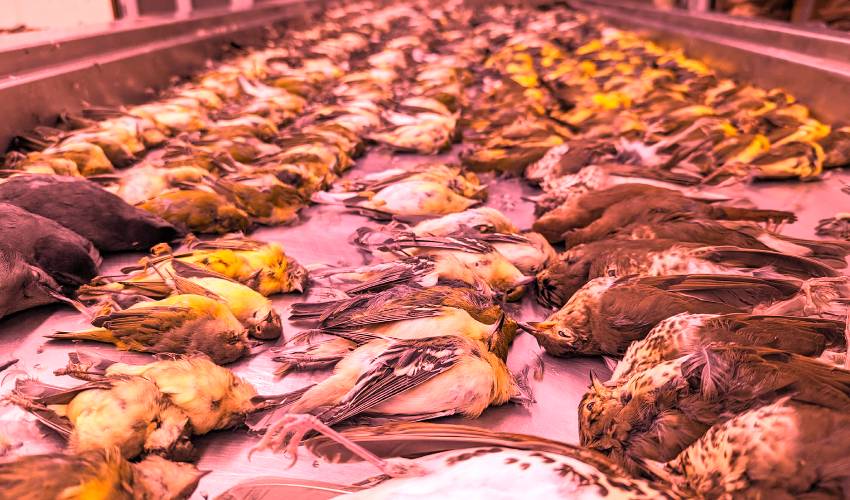At least 1,000 birds died from colliding into a single building in Chicago on October 5 as they migrated south to their wintering grounds.
Volunteers are still recovering bird carcasses within 1.5 miles of McCormick Place, the largest convention centre in North America - which is largely covered with glass.
This was the highest number of bird strikes that the Chicago Bird Collision Monitors group recorded from the grounds of one building in a single day.
Experts say that the true extent of affected birds will unravel over a couple of days as people continue to pick up birds around downtown Chicago.
They also note that birds dying in large numbers in a small geographic area tends to occur during peak migration periods in spring and fall.
Weather conditions like opposing wind, rain, and fog can make it difficult for birds to orientate themselves, in addition to light pollution from cities that can draw them in and trap them among deadly structures.
Of all cities in the US, Chicago's light pollution poses the greatest risk for migrating birds.
Turning off building lights is one way to reduce fatalities.
A 2021 study done in McCormick Place, the same site of Thursday's bird deaths, found that shutting off half the lights in large buildings can reduce collisions by six to 11 times.
Having window glass with visual markers like dots or patterns can break up the appearance of reflection and let birds recognize whether there is a safe passage for them to fly through.
In 2020, Chicago approved a bird-friendly design ordinance, but it is yet to take effect.
In 2021, the Illinois governor, JB Pritzker, signed the Bird Safe Buildings Act, which requires bird-friendly design to be incorporated into the construction and renovation of state-owned buildings in the state.
Experts say that we have a lot of existing buildings that are killing birds, not just new construction.



























